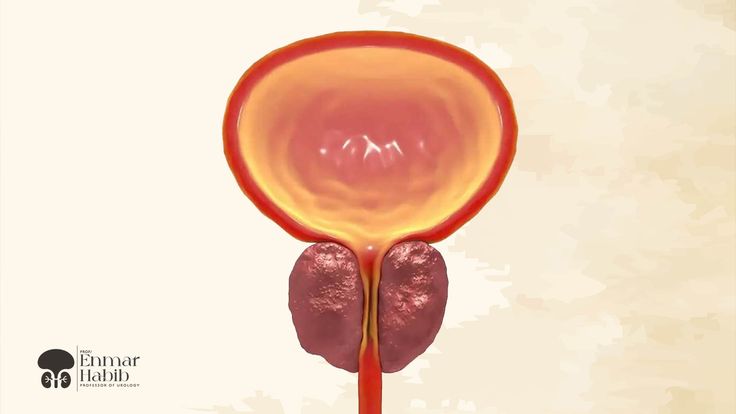Holmium Laser and Interventional Radiology Differences in BPH Treatment
Home Surgery Tips Holmium Laser and Interventional Radiology Differences in BPH TreatmentHolmium Laser and Interventional Radiology Differences in BPH Treatment
The Holmium Laser is the ideal solution for prostate enlargement due to its permanent and fast results compared to interventional radiology.
Share:

Holmium Laser and Interventional Radiology Differences in BPH Treatment
Interventional radiology has recently been applied to the treatment of many diseases. So many people ask this question: Can interventional radiology be used to treat benign prostatic hyperplasia? Why is the holmium laser the best and most effective option for treating prostate enlargement? Learn with us the difference between holmium laser and interventional radiology for prostate hyperplasia.
1. Holmium Laser:
The holmium laser is considered the optimal choice for treating benign prostate hyperplasia for several reasons, the most important of which are:• Complete and precise removal: The holmium laser removes all the enlarged prostate tissue precisely, preventing the recurrence and ensuring complete symptoms disappearance.
• No need for drug therapy: After the procedure, the patient does not need to continue taking medication to alleviate symptoms.
• Effectiveness in large and complex cases: It is distinguished by its ability to treat severe enlargement or cases experiencing acute urinary obstruction.
• Safe technique: The technique does not cause significant damage to the surrounding prostate tissue, reducing the risk of complications.
• Short recovery period: Patients can return to their normal lives more quickly compared to traditional surgery or other methods.
• Avoid infection: Because no external incisions are required, there is less likelihood of infection after the procedure.
2. Interventional Radiology:
Interventional radiology relies on guiding a therapeutic catheter from the femoral artery using X-ray or ultrasound techniques. In the case of benign prostatic hyperplasia, interventional radiology can be used to block the prostate arteries (Prostate Artery Embolization), where the catheter is directed to the arteries that supply blood to the prostate to stop blood flow, leading to prostate shrinkage. Despite the novelty of this technique, it has several limitations:• Temporary Results: The treatment relies on stopping the blood supply to the prostate, which leads to shrinkage over time. However, symptoms may reappear after a while. This is due to the restoration of blood supply to the prostate through alternative blood vessels, as the network of arteries and veins from the pelvic area begins to supply the prostate again to compensate for the blockage, allowing blood flow to return to the prostate gland either through the closed supplies or other blood supplies.
• Limited effectiveness: The results of interventional radiology are comparable to drug therapy and are not as effective as complete removal of the enlarged tissue with the holmium laser.
• Need for a urinary catheter: The patient requires the insertion of a urinary catheter for a period of time after undergoing interventional radiology treatment to ensure the patient can urinate properly while also receiving medication. Having a catheter in place for an extended time causes difficulty in movement and performing daily activities.
• Potential complications: Due to the complex network of blood vessels in the pelvic area, attempts to block the arteries supplying the prostate may unintentionally lead to the blockage of other arteries, such as those supplying the bladder neck, or those involved in erectile function. This can cause serious complications, such as depriving the bladder of blood, leading to tissue death, or causing coldness in the tip of the penis due to reduced blood flow.
• Longer recovery time: The patient requires more time to recover compared to Holmium Laser, and the symptoms do not disappear immediately because it takes time for the enlarged prostate to shrink and the symptoms to disappear.
• Experimental stage: Interventional radiology for benign prostatic hyperplasia (BPH) is still in the experimental phase and has not been officially approved for treating such cases, as scientific research has not yet proven its effectiveness.
• Need future surgical intervention: The patient may need to undergo another procedure after one or two years due to the recurrence of the enlargement and the return of symptoms.
Why is Holmium laser better than interventional radiology for treating benign prostate hyperplasia?
• It provides a permanent solution by completely removing the enlarged tissue.• It reduces the need for medications or future interventions.
• It ensures immediate results, compared to interventional radiology, which takes time to become effective.
• It spares the patient from potential complications, such as accidental blockage of other arteries or the need for repeat treatment.
If you are looking for an effective and permanent treatment for an enlarged prostate, the Holmium Laser with Dr. Enmar Mohamed Habib, Professor of Urology and Pediatric Urology at Cairo University and Fellow of McGill University, Canada, is the ideal choice because it combines safety, speed, and effectiveness in eliminating symptoms without the need for additional interventions or worrying about recurrence. Interventional radiology offers a temporary solution with limited effectiveness.